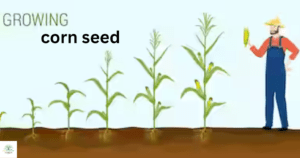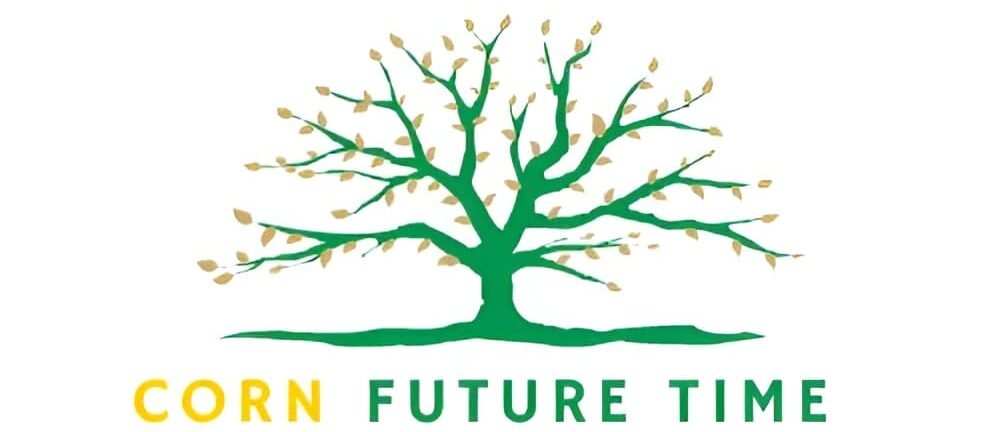Seed Corn Production
Techniques
 |
| “Seed corn production blends precision breeding, quality assurance, and sustainable practices, ensuring optimal seeds for robust agricultural yields.” |
Seed corn production is a meticulous process that requires careful
planning, management, and attention to detail. The production of high-quality
seed corn involves several steps, from planting to harvest and processing. In
this article, we will delve into the intricacies of seed corn production and
explore the techniques used to ensure the production of superior seeds. Whether
you come from a family farm or are simply interested in learning about the
fascinating world of agriculture, this guide will provide you with valuable
insights into the seed corn production process.
1. Seed Corn Definition:
·
Begin by defining what seed corn is. Seed corn refers to corn
specifically grown and processed for the purpose of producing seeds. These
seeds are then used by farmers for planting in subsequent seasons.
2. Importance of Quality Seed
Corn:
·
Discuss why the quality of seed corn is crucial for achieving
high crop yields. Quality seeds contribute to better germination, improved
plant health, and increased resistance to diseases and pests.
3. Selection of Parental Lines:
·
Explain how farmers and breeders select parental lines with
desirable traits for seed corn production. This involves choosing corn plants
that exhibit characteristics such as high yield, disease resistance, and
adaptability to specific growing conditions.
4. Hybridization Process:
·
Detail the hybridization process, which involves crossbreeding
selected corn varieties to create hybrids with desirable traits. This process
often results in improved uniformity and vigor in the offspring.
5. Field Isolation and Pollination
Control:
·
Discuss the need for field isolation to prevent
cross-pollination with non-seed corn varieties. Controlling pollination ensures
the genetic purity of the seed corn.
6. Seed Treatment and
Conditioning:
·
Explore the treatments and conditioning processes applied to
seed corn to enhance its germination potential. This may include seed coating,
priming, or other methods to improve seedling vigor.
7. Quality Assurance Measures:
·
Highlight the quality assurance measures implemented during seed
corn production. This can include testing for genetic purity, germination
rates, and freedom from diseases.
8. Harvesting and Storage
Practices:
·
Describe the best practices for harvesting seed corn,
emphasizing the importance of proper timing and handling. Discuss methods for
storing seed corn to maintain its quality until planting.
9. Role of Technology in Seed Corn
Production:
·
Explore how technology, such as precision agriculture and
genetic testing, is incorporated into modern seed corn production to enhance
efficiency and quality.
10. Challenges and Future Trends:
·
Address challenges faced in seed corn production, such as
environmental factors and market demands. Discuss potential future trends in
seed corn production, including advancements in breeding techniques and
sustainability practices.
The Importance of Quality Soil
Producing corn for seed requires higher quality soil compared to
regular field corn production. This is because the quality of the soil directly
affects the quality of the seeds. Seed corn production entails meticulous soil
preparation and management to create the ideal conditions for seed development.
Farmers must ensure that the soil is well-drained, nutrient-rich, and free from
pests and diseases. By maintaining optimal soil conditions, farmers can
maximize the yield and quality of their seed corn.
Planting Techniques for Seed Corn
Planting seed corn differs from planting regular corn. Corn is a
dioecious plant, meaning that it has both male and female reproductive parts.
In seed corn production, the corn plant is divided into male and female seeds
before planting. The ratio of male to female plants varies, with the typical
ratio being one male for every four females. This ensures proper pollination
and seed development.
To
maximize pollination, farmers employ a technique called flaming. Flaming
involves towing an implement with oscillating burners through the field across
the male rows. This process stunts approximately 50% of the plants, ensuring
that the pollen is not released all at once. By staggering the release of
pollen, the chances of successful pollination are increased.
https://www.pioneer.co.nz/seed-production/production-process
Post-Planting Care and Inspection
Once the seed corn field has been successfully planted, it
requires diligent care and monitoring. Field inspectors play a crucial role in
ensuring the quality of the seeds. They inspect the corn for any planting or
disease issues that could impact seed quality. Inspectors specifically look for
silk emergence and the timing of tassel development. The goal is to cut off the
tassel before it releases pollen, preventing self-pollination.
Cutting machines equipped with blades set to cut halfway down the
tassel are used to remove the tassel from the female rows. After the initial
cutting, the field is left to allow the tassel to regrow and extend. Once the
tassel extends, another machine is used to roll the remaining tassel out of the
plants. Finally, a crew of people hand-pull the remaining tassels. This
meticulous process ensures that only a minimal percentage of female tassels is
left, maintaining the purity of the seed corn.
Harvesting and Processing
Seed corn harvest usually takes place in early September and is
completed by early October to avoid frost damage. Before harvesting, the corn
is sprayed with a desiccant to dry out the plant material. This helps protect
the kernels, which should have a moisture content of around 32%-35% at harvest.
Specialized harvest equipment is used to harvest the ears of corn
with the husks intact. The husks provide extra protection to the kernels during
transport. Once harvested, the corn is transported to a processing facility. At
the facility, the husks are removed, and the ears are sorted based on their
quality. The corn is then dried over a period of approximately 72 hours to
achieve a moisture content of 12%-13%, ensuring safe shelling.
After drying, the corn undergoes thorough cleaning to remove any
foreign materials and is sorted again by size and color. Quality checks are
conducted throughout the process to ensure the seeds meet the desired
standards. If desired, the corn is treated with various seed treatments to
protect against pests and diseases. Finally, the seeds are packed for delivery,
ready to be used by farmers for the next planting season.
https://www.slideshare.net/bhavyasree528/seed-productionmaize
Conclusion
Seed corn production is a complex and highly regulated process
that requires meticulous attention to detail at every stage. From planting to
harvest and processing, farmers employ specific techniques to ensure the
production of high-quality seeds. By carefully managing soil conditions,
maximizing pollination, and following strict inspection and processing
procedures, farmers can produce superior seed corn varieties. The dedication
and expertise of those involved in seed corn production play a vital role in
ensuring the availability of high-quality seeds for farmers worldwide



One thought on “Seed Corn Production Techniques”